| |
Delasnieve Daspet
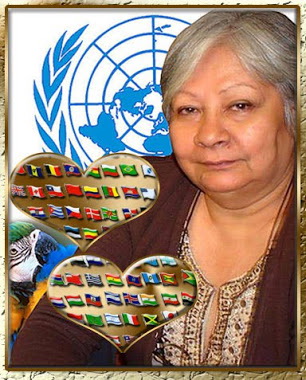
Global Peace Science Hero: http://peacefromharmony.org/?cat=en_c&key=697
Gandhian Global Harmony Association (GGHA) Vice-President,
GGHA Ambassador of Peace and Disarmament from Harmony in Latin America,
GGHA Global Peace Science Hero-Translator:
https://peacefromharmony.org/?cat=en_c&key=697,
Lawyer, Peace activist, Poet, Essayist, Lecturer, Teacher, Address: Campo Grande, Mato Grosso do Sul, Brazil Email: delasnievedaspet {@} gmail.com Web: http://peacefromharmony.org/?cat=en_c&key=664 https://www.facebook.com/1583557888593977/photos/a.1583681098581656.1073741828.1583557888593977/1701461043470327/?type=3&theater http://associacaointernacionaldepoetas.blogspot.ru/2016/02/globalpeacescience-gps.html http://cercleuniverselambassadeurspaix-dd.blogspot.com.br/2016/02/globalpeacescience-gps.html https://www.facebook.com/Espa%C3%A7o-Cultural-de-Delasnieve-Daspet-Amigos-938702822817353 http://associacaointernacionaldepoetas.blogspot.ru/2015/12/world-intellectuals-endorse-importance.html
---------------------------------------------------------------------------

------------------------------------------------------------
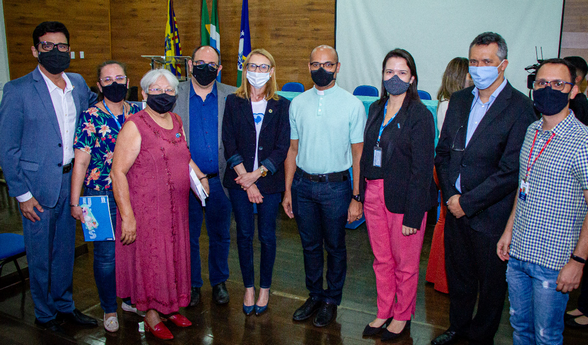
Eu reuniãocom a Sra. ANGELA GANDRA, Secretaria Nacional da Família, do governo brasileiro,
onde apresento meu projeto de Culturade Paz a partir da Família. October 2, 2021 У меня встреча с г-жой АНЖЕЛА ГАНДРА, Национальный семейный секретариат,
Правительство Бразилии, где я представляю свой проект «Культура мира» семьи. 2 октября 2021
-----------------------------------------------------------------
See Leo Semashko invitation for new peace culture here:
https://peacefromharmony.org/?cat=en_c&key=1016
Mr. Leo Semashko,
Após quase dois anos de total recolhimento, com a graça de Deus, voltamos ao trabalho. Ficamos sem ação na briga entre politicos em nosso pais. Estou à disposição do senhor. Envio um artigo sobre a paz.
Mr. Leo Semashko,
After almost two years of total withdrawal, with the grace of God, we went back to work. We are left without action in the fight between politicians in our country. I am at your disposal. I send an article about peace.
Culture of Peace
By Delasnieve Daspet
The last century, despite advances in various fields of knowledge, was unfortunately marked by a growing wave of violence. In Brazil, and for the rest throughout the planet, contemporary society has seen many values fall to the ground — such as solidarity, respect, tolerance, even if not generally speaking. More than ever there is a clamor for change, even if it doesn't make itself audible. Where are we heading if there is no reversal of the intolerance and violence installed in our daily lives? We cannot simply close our eyes and follow submissive towards barbarism. A culture of peace must be built! We really want to implement programs that influence young people on the path of friendship and peace. We believe it is possible to reverse the trend installed in many communities and regions, with a high number of deaths from external causes among young people and for the most trivial reasons: idleness, which gives rise to many vices; lack of options in sports, culture and leisure activities. Respecting life, rejecting violence, being generous, listening to understand, preserving the planet and rediscovering solidarity are the watchwords of our program — Schools of Peace. Clearly, there is a lot to be done in a society marked by injustice and inequality like ours. But you have to start somewhere. And, we believe, the School of Peace was a hit. The examples speak for themselves. And the school rediscovers its role of educating in the broadest sense. It ceases to be a mere conveyor of curricular knowledge and opens up to the community on weekends, as a source of leisure and inspiring of nobler values. Schools of Peace is much bigger than one could classify, it is a response to a specific demand from society, which wants alternatives for its ills and effective practices against its ills. Peace in everyday life. Even working in a variety of fields of action, UNESCO's unique mission is to build peace: “The purpose of the Organization is to contribute to peace and security, promoting cooperation among nations through education, science and culture, aiming to promote universal respect for justice, the rule of law and human rights and fundamental freedoms affirmed to the peoples of the world”. To achieve this goal, UNESCO works by cooperating with governments at its three levels, with the legislature and civil society, building an immense network of partnerships, mobilizing society, raising awareness and educating for a culture of peace. Creating the school of peace whose main objective is to give opportunities of access to young people, while educating for values, for peace and for the construction of citizenship. Our biggest challenge is to transform the values of the Culture of Peace come true in everyday life. Translate each of the challenges proposed by the Culture of Peace into reality, in people's lives. Preparing for peace, therefore, means: • respect the life and dignity of each person, without discriminate or harm; • practice active non-violence, repelling violence in all its forms: physical, sexual, psychological, economic and social, in particular in relation to the weakest and most vulnerable, such as children and adolescents; • share my time and material resources, cultivating generosity in order to end exclusion, injustice and political and economic oppression; • defending freedom of expression and cultural diversity, always privileging listening and dialogue, without giving in to fanaticism or backbiting or rejecting others; • promote responsible consumption and a model of development that takes into account the importance of all forms of life and the balance of the planet's natural resources; • contribute to the development of my community, promoting the full participation of women and respect for democratic principles, to create new forms of solidarity. The Culture of Peace is part of a framework of respect for human rights and constitutes fertile ground for ensuring the fundamental values of democratic life, such as equality and social justice. This evolution requires the participation of each one of us to give young people and future generations values that will help them to forge a more dignified and harmonious world, a world of justice, solidarity, freedom and prosperity. This is the challenge to which we set ourselves: to build, in our society, a Culture of Peace. Working in education, in solidary construction of a new society, where respect for human rights and diversity are concretely reflected in the life of every citizen, where there is space for plurality and life can be lived without violence. It should be remembered that this challenge cannot be thought of as a dream or that we are proposing to build utopia. We believe that even a small group, however thoughtful and committed, can change the world.
Delasnieve Daspet, Lawyer, Peace activist, Poet, Essayist, Lecturer, Teacher, Campo Grande, Mato Grosso do Sul, Brazil, Gandhian Global Harmony Association (GGHA) Vice-President, GGHA Honored Translator, Universal Peace Ambassador https://peacefromharmony.org/?cat=en_c&key=664 20-09-21
---------------------------------------------------------------------------

Hoje, 10.07.2020, pelamanhã,estivena Comunidade Canguru, convidada pelo Prof. Bruno Nobrega. Levei minha arte, a minha poesia,para crianças de todas as idadese a seus pais. Levei, tb, livros de outrospoetas e escritores, locais e nacionais. Falei com elas de sonhos e de realizações. Instei-as a sonharem. A fazeremdo seu sonho - o caminho para o futuro. Delasnieve Daspet. Brazil, 10-07-20
-----------------------------------------------------------------------------------------------
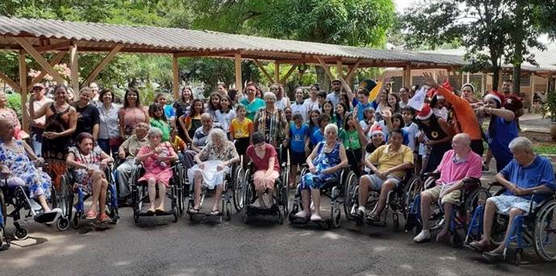
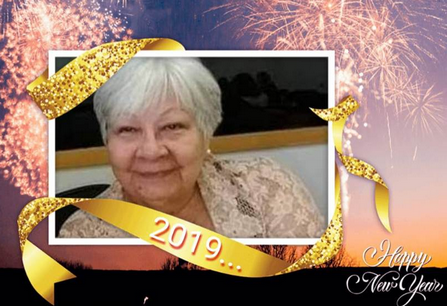
31-12-18
------------------------------------------------------------------------------
Mm Delasnieve Daspet, Brazil, was recognized as the GHA Honored Translator for her numerous translations into Portuguese published in the Portuguese section of the GHA website "Peace from Harmony": http://peacefromharmony.org/?cat=po_c The last translations were published here: http://peacefromharmony.org/?cat=po_c&key=93
http://peacefromharmony.org/?cat=po_c&key=94 01-07-18
------------------------------------------------------------------------------------------
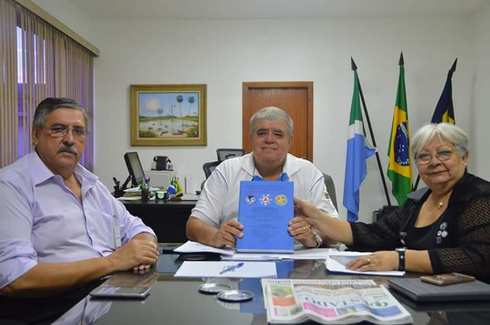
Dr. Leo Semashko, Founder (2005) & GHA Honorary President.
Global Harmony Association (GHA),
Como disse ao senhor, entreguei ao governo brasileiro o livro da GHA, na pessoa do Sr. Ministro Carlos Marum da Secretaria de Governo da Presidência da República do Brasil. Fiz as proposições necessárias, conforme orientação da GHA e que eu houvera dito ao senhor, que eu faria.
Obrigada,
Delasnieve Daspet
GHA- Brasil
16-06-18
.
Dr. Leo Semashko, Founder (2005) & GHA Honorary President.
Global Harmony Association (GHA),
As I told you, I handed the GHA book to the Brazilian government, in the person of Minister Carlos Marum of the Secretariat of Government of the Presidency of the Republic of Brazil. I made the necessary propositions, as directed by the GHA and which I had told you, that I would do.
Thanks,
Delmasnieve Daspet
GHA- Brazil
16-06-18
From the TL of the Minister of the Government Office of the Presidency of the Republic - Carlos Marum:
"Continuing its agenda, Minister Carlos Marun received the representative of the Global Harmony Association (GHA), Mrs. Delasnieve Daspet, who works for harmony and peace across the planet and brought to the minister a proposal to be held in Brazil the "World Games of Peace" in 2018 or 2019, in addition to requesting the creation of a ministry of peace that would deal with the issues of harmony of people inside and outside the country. " Mrs. Delasnieve asked the minister to kindly present President Michel Temer with the book she gave him.
Dear Delasnieve,
Thank you very much for your great peacemaking action of involving the Government of Brazil to the "Global Peace Science"! We highly appreciate your action, the information and photo of which we were happy to publish on your personal page here: http://peacefromharmony.org/?cat=en_c&key=664 . We admire with your initiative to host the "World Games of Peace" in Brazil in 2019 and create a "Ministry of Peace" in the Government, for the success and prestige of which the fundamental scientific platform of the GPS is needed. In this regard, could you ask your Minister to finance a small amount of $ 2,000 for a statistical research (for the payment of one professional statistician) under your leadership of the Brazilian Spherons as the main actors of peace in the country? All the necessary materials for this research I will send you on your first request. Is it possible for you to join Brazil to the scientific knowledge of the global peace genetics, hidden in the deep structural harmony of the spherons? We will publish similar researches in the special book "Global Peace Genetics" in the autumn, where Brazil could be represented in the most worthy scientific and innovative way.
We hope for your enthusiasm, understanding and success.
Best wishes for peace from harmony of spherons at the genetic level,
Leo,
Dr. Leo Semashko,
GHA Honorary President
16-06-18
-----------------------------------------------------------------------------------------------------------------
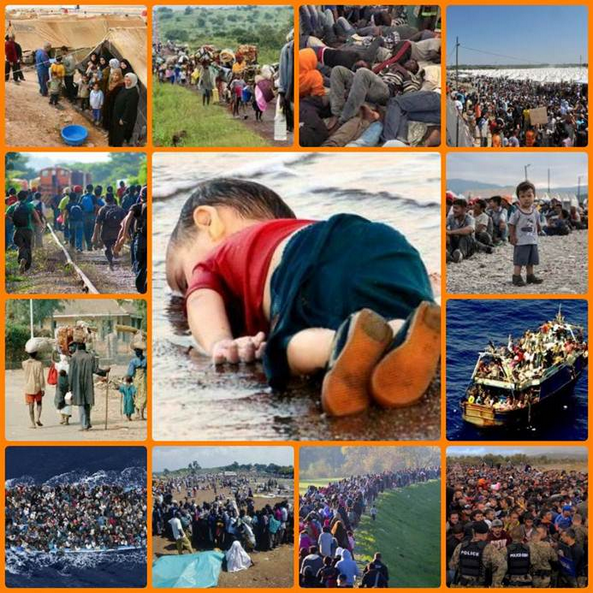
Réquiem para os Refugiados
Duas Mortes - (Apátridas)
Delasnieve Daspet
.
Sonham por anos,
Uma vida inteira,
Na fome e na miséria,
Privam-se do mínimo
Buscam a liberdade.
.
Partem sem nada
Buscando o todo.
Pedem tão pouco, e, dão tudo.
.
Deixam suas origens;
Vivem a espera
Do que pode ser.
.
Resistem quanto podem
A sanha criminosa...
Alguns morrem na caminhada.
.
Em alto mar
Sem repouso definitivo, sem dignidade,
Seus corpos são jogados,
.
Apátridas, perdidos,
Sem amarras...
Sem sonhos,
Morrem duas vezes.
.
Sonhos e vidas se perdem,
Vitimas de guerras, fome, perseguições;
No mar da morte,
Muitos, ainda, irão morrer!...
DD_Campo Grande-MS, 22 julho de 2015.
http://www.usinadeletras.com.br/exibelotexto.php?cod=169919&cat=Poesias&vinda=S Delasnieve Daspet 16-03-18
Requiem for refugees +++ Questions about the right to life
Dear Delasnieve,
Many thanks for your strong photo montage and a poem "Requiem" about the suffering of refugees. They were published on your personal page: http://peacefromharmony.org/?cat=en_c&key=664 Who is guilty of this genocide of humanity, in the destruction of the first human and humanity right - the right to life? Why does humankind still do not have the Universal Declaration of Human / Humanity's right to life as the first and fundamental for all other rights, which do not exist outside, without and beyond life???? Or are they thinking for dead people, for dead children and for a dead humanity??? The GHA answers this question and proposes a similar Declaration for the United Nations (http://peacefromharmony.org/?cat=en_c&key=798). But will the UN of disharmony (http://peacefromharmony.org/?cat=en_c&key=769) be able to recognize this Declaration? Here is a big question and doubt.
What do you and everyone think about it? Why is our main right - the right to life - not protected to this day by any fundamental international law? And those that exist are weak, forgotten or trampled - why???????
With love. Heartily, Best wishes for peace from harmony through the science of Spherons, Leo Dr. Leo Semashko GHA Honorary President http://peacefromharmony.org 17-03-18
----------------------------------------------------------------------------------
“Vá em frente! A paz vem da harmonia através da ciência” “Go ahead! Peace comes from harmony through science" Mr. Leo Semashko “This is a summoning moment. A chant of homage to life - reminding those who were victims of any kind of violence. on this day - March 8 - on the said International DAY of the women, we cry: Enough of violating our rights! We ask for real and effective proposals and commitments with women!” Delasnieve Daspet http://peacefromharmony.org/?cat=en_c&key=664 Brazil 08-03-18 --------------------------------------------------------------
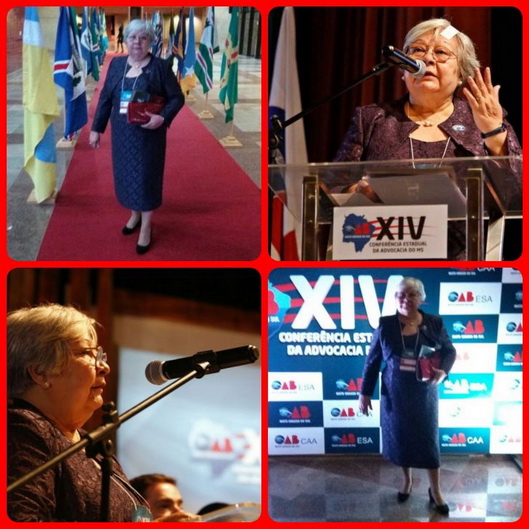
http://delasnievedaspet.blogspot.com.br/2017/06/pobreza-direitos-humanos-e-o-pazear-por.html
Published in five languages here: http://peacefromharmony.org/?cat=po_c&key=92
27-06-17
-------------------------------------------------------------------------------------------------------
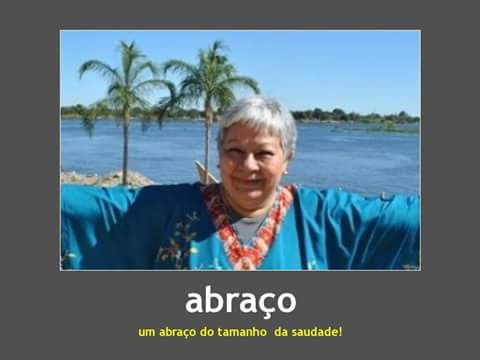
Delasnieve Daspet fará prosa poética na abertura da Conferência Estadual da Advocacia Data: 06/06/2017 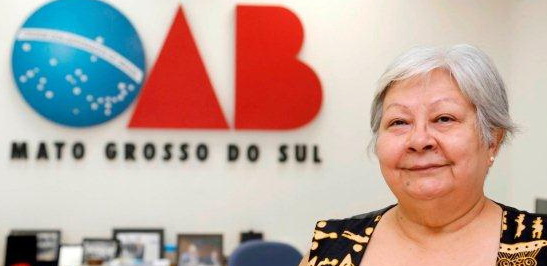
A presidente da Comissão da Cultura da Ordem dos Advogados do Brasil, Seccional Mato Grosso do Sul (OAB/MS), Delasnieve Daspet será a responsável por proferir uma poesia que simbolize a união da humanidade, durante a abertura oficial da XIV Conferência Estadual da Advocacia de Mato Grosso do Sul, que acontece nesta quinta-feira (8). A advogada, que também é poetisa renomada de Mato Grosso do Sul, destacou a importância da arte em eventos como a Conferência. “A gente tem que insistir em difundir a arte, em todas suas vertentes, para que chegue ao alcance de todos; esse é o maior sentimento de um artista”, refletiu. Daspet programou uma prosa-poética para apresentar a comunidade jurídica e mencionou um verbo que a acompanha em todas suas ações: pazear. “Pazear é caminhar juntos, de maneira harmoniosa que complementa o artigo nº 1 dos Direitos Humanos, onde se diz que ‘Somos Todos Iguais’; acrescentarei uma reflexão que diz respeito da maior tristeza que temos, que é a pobreza”, ressaltou. Para a advogada, muitos que vivem na extrema pobreza sequer conhecem este artigo, que trata justamente dessa igualdade. “Essa será a síntese da minha fala, aonde me coloco nessa situação, enquanto ser humano... quero dizer que estou à disposição desse invisível que habita o planeta, serei a voz, a mão, o sonho dessa pessoa”. Ela afirma ainda que a corrupção é uma inimiga de quem luta pelos Direitos Humanos e salientou: “tenho usado a advocacia para fazer esse trabalho social”. O evento será realizado de 8 a 10 de junho no Centro de Convenções Rubens Gil de Camillo. As inscrições podem ser feitas pelo site www.esams.org.br http://www.oabms.org.br/noticias.php?id=18035
BRAZIL Delasnieve Daspet (center): apresentação do nosso livro GLOBAL PEACE SCIENCE - no Conselho Federal da OAB - Ordem dos Advogados do Brasil (Brazilian Bar Association), em Brasilia-DF, October 22, 2016 | 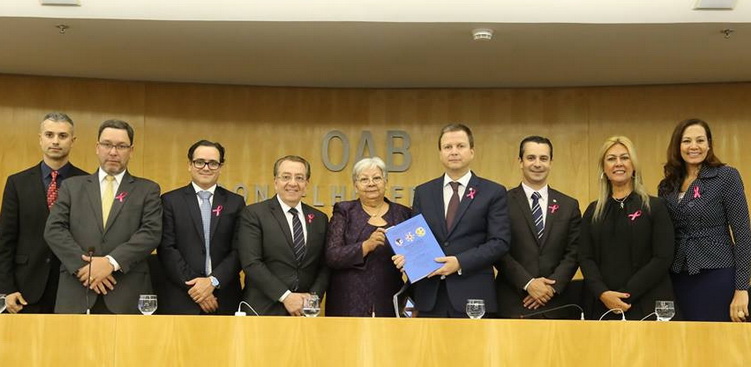
| Na foto ( esquerda para a direita ) - Sr. Anderson Geradi, Sr. Guilherme Duque Estrada, Conselheiro Federal por Mato Grosso do Sul - Bito, Presidente da OABMS - Mansour Elias Karmouche, Delasnieve Daspet, Presidente da OAB Nacional - Claudio Lamachia, do lado do Lamachia eu não sei o nome, ai a Sra. Rosely Saad, Presidente do Portuguese Language Institute - órgão da onU e a Sra. Vanuza Jardim - Representante das ações culturais da onU. Agradeço ao Mansour Karmouche, presidente da OABMS por me oportunizar o momento. Agradeço a Vanuza Jardim, Rosely Saad, Henrique Duque Estrada e Anderson Anderson Magalhães Gerardi, que me honraram com suas presenças. Read more: http://peacefromharmony.org/?cat=en_c&key=664 |
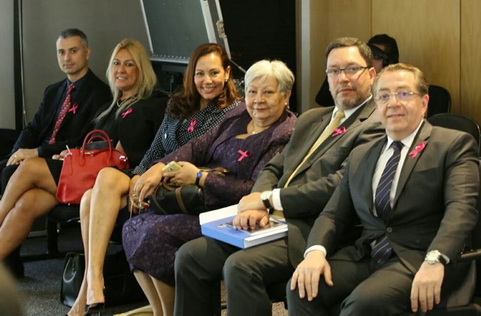
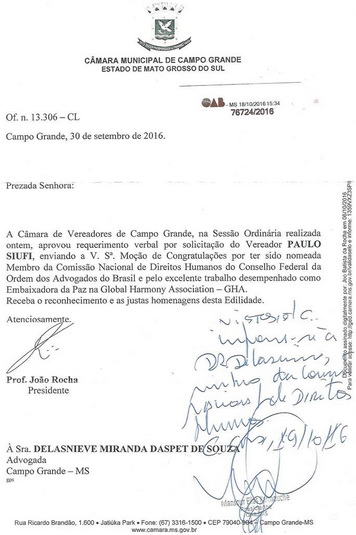
Поздравление от Совета Палаты города мне и ГСГ – Глобальному Союзу Гармонии Congratulations from the City Council Chamber to me and GHA - Global Harmony Association Encaminho ao senhor a Moção de Congratulações que recebida Câmara Municipal de Vereadores,
onde eles fazem menção ao GHA - Global Harmoy Association.
-------------------------------------------------------------------------------------------------------------
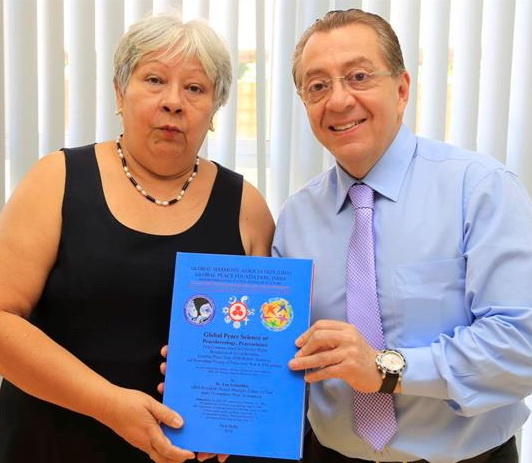
Review of Global Peace Science (GPS) By Delasnieve Daspet* on Portuguese O livro Ciência da Paz Global (GPS ou Peacescience), elaborado pela Global Harmony Association (GHA) durante oito anos, foi lançado em janeiro de 2016, em São Petersburgo, na Rússia. A publicação, no idioma inglês, com 616 páginas, teve a participação de 174 co-autores de 34 países, entre eles, filósofos, sociólogos, religiosos e colaboradores das mais diferentes profissões, idades e, especialmente, culturas. A advogada, Delasnieve Daspet, foi nomeada embaixadora da paz em 2005. É a única brasileira a integrar o seleto rol de intelectuais do grupo internacional GHA que defende, sobretudo, uma unidade harmoniosa do planeta com prioridade social das crianças, geopolítica da paz global, o desarmamento geral e prosperidade econômica para todas as nações. Delasnieve recebeu dez exemplares do livro e explicou que o trabalho da organização internacional propõe uma mudança na grade escolar. Segundo ela, a ideia é estudar a paz como uma matéria de classe, um tema curricular. “Temos que discutir esse assunto desde os primeiros anos de escola, quando as pessoas aprendem civilidade, coletivismo, parceria, tudo isso influi na realização da paz, que na verdade tem que começar dentro de casa. O individualismo hoje é latente e nós temos que aprender a dividir as coisas, compartilhar. Saber que o seu direito começa onde termina o meu, talvez seja o principal ensinamento em busca da paz”, disse a advogada. A publicação Ciência e Paz Global busca alternativas para que a sociedade se afaste das intermináveis guerras, terrorismo, crimes, corrupção, desigualdade e que possa evoluir por meio da ciência, educação, cultura e democracia. De acordo com a escritora, constam na obra, poesias que exaltam a amizade, o respeito e a responsabilidade para com os povos do planeta. “Tenho orgulho de dizer que faço parte desta entidade que congrega em seu seio pessoas que discutem a paz e a cultura da paz - como ciência a ser - necessariamente - aplicada para que o mundo, como o conhecemos, possa ter continuidade”, descreve. Entre os co-autores Peacescience estão o ex-presidente indiano - Abdul Kalam, o laureado Nobel da Paz da Irlanda do Norte - Mairead Maguire, líder pacificação intelectual dos EUA - Noam Chomsky, pioneiro dos estudos de paz da Noruega - Johan Galtung, Chanceler da Universidade Pedagógica IASE of India - Kanakmal Dugar, sociólogo da Universidade Católica da Bélgica - Francois Houtart, líder da organização de tomada de paz das mulheres na África - Ayo Ayoola-Amale do Gana, pesquisador da criatividade Roerich - Julia Budnikova da Rússia, diretor do Instituto de Finanças , acadêmico do Cazaquistão - Uraz Baimuratov, um dos líderes de ioga indiano - Ramesh Kumar e muitos outros cientistas e pacificadores em circulação (6). Iniciador, editor-chefe e gerente do projeto é Leo Semashko, GHA Fundador e Presidente, Rússia. Delasnieve Daspet* Global Harmony Association (GHA) Vice-President, GHA Ambassador of Peace and Disarmament from Harmony in Latin America, Lawyer, Peace activist, Poet, Essayist, Lecturer, Teacher, Address: Campo Grande, Mato Grosso do Sul, Brazil Email: delasnievedaspet {@} gmail.com Web: http://peacefromharmony.org/?cat=en_c&key=664 01/04/16
--------------------------------------------------------------------------------------------------------------
Senhores membros do GHA,
Boa noite!
Fui recebida pelo ilustre juiz brasileiro Sergio Fernando Moro, em audiência especial, no dia 30 junho pp, na Justiça Federal do Estado do Paraná. Ele, hoje, sem dúvida, é um dos homens mais importantes do Brasil, e, esta relacionado entre os cem – mais importante do mundo. Ele esta reescrevendo a nossa história. Convidou-me para eu ir ate Curitiba – encontrar-me com ele. Fui e levei duas láureas. Falei do GHA e do livro Global Peace Science. Entreguei a ele um volume.
Fraterno abraço a todos,
.
Delasnieve Daspet
06/07/16
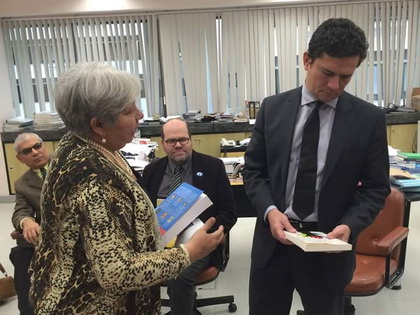
Sergio Fernando Moro - Brazilian federal judge
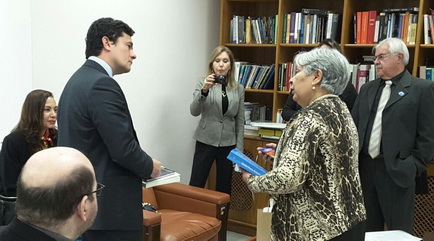
------------------------------------------------------------------------------------------------------------------------------------------------
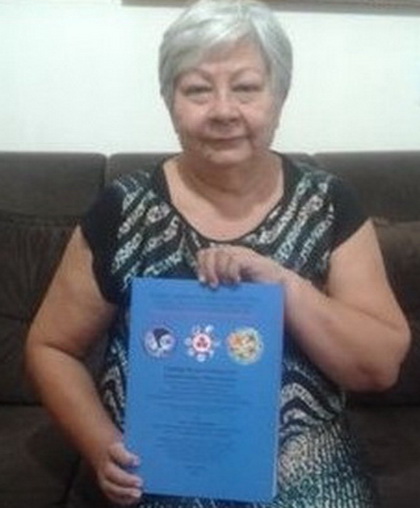
World Intellectuals Endorse the Importance of Global Peace Science: All of us, without distinction, have great responsibility to build and position ourselves for peace. We have to go different paths that lead us to peace and social justice from social harmony, which has respect for human rights and needs. We can bring everyone love and messages of hope for peace from harmony only through science, which gives one truth for all nations and people. Global Peace Science appeared only in 2015, across more than two centuries after the military science in 1799 inventing new weapons; therefore peace more than two centuries loses to war. The only weapon of global peace is its Science, for which can follow every person, if he/she wants to live in peace and not to die in the war. We must teach it to our children. Delasnieve Daspet, Lawyer, Poet, Writer, Peacemaker, Brazil 19/12/15 (See Global Peace Science, 2016: http://peacefromharmony.org/docs/global-peace-science-2016.pdf, page 609) 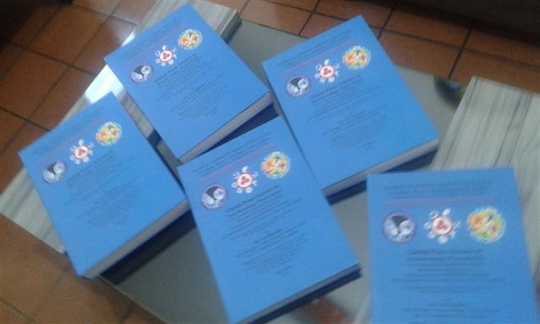
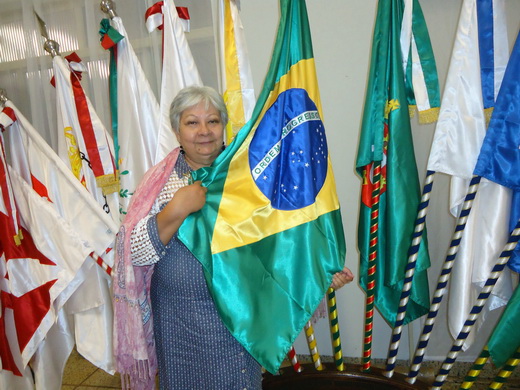
DELASNIEVE DASPET, Bio Lawyer and activist of Peace, Social, Environmental and Cultural causes, Delasnieve Miranda Daspet de Souza is from Porto Murtinho, where she was born and raised in the midst of exuberant nature, which is the Pantanal of Mato Grosso do Sul, Brazil, residing in Campo Grande-MS. Married, she has two children. She is poet, activist of Biopoesia. Columnist, essayist, lecturer, teacher, educator, does social work with needy children, is owned and associations and literary academies and national and international cultural. With literary works nationally and internationally awarded, published in several countries. She is Peace Ambassador in Universal Ambassador Peace Circle - Geneva - Switzerland, 2005; Representative for Brazil Universal Ambassador Peace Circle; Ambassador for Peace - Universal Peace Federation on the International Federation for Peace Word - 2007, Seoul, Korea; Member of the World Academy Arts and Culture Foundation - WAAC / WCF (Seoul-Korea-USA); President to Brazil from India Intellectual Peace Academy, Bareilli - India; , Member of GHA - Global Peace Science - St. Petersburg, Russia; Member and representative for Brazil's World Philosophical Forum, Athens - Greece; Earth Citizen elected - XXI Century by the World Philosophical Forum - Athens, Greece, UNESCO -. Peace Ambassador in Brazil - IFLAC PAVE PEACE- The International Forum For the Literature and the Culture of Peace, Israel. Representative in Mato Grosso do Sul the Proyecto Cultural SUR; Governor of the Brazilian Institute of International Cultures. President of the International Association of Poets, a member of the Permanent Forum of Mato Grosso do Sul. Membro Human Rights Regional Commission for Justice and Peace - Mato Grosso do Sul (MS CRJP-), a subsidiary body of the National Conference of Bishops of Brazil (CNBB ) - Regional West Regional 1DO. As an activist of social causes always works and has worked for the integration of minorities - in all aspects, cultural, social, human rights, peace and solidarity. Chaired the State Forum of Culture MS until October 2015, and also the State Council of Culture until April 2015. She is the author of the drafts of laws that created the DAY STATE OF PEACE (Law 4034 of 31.05.2011), and, DAY MUNICIPAL PEACE CULTURE (Law 5039 of 22.12.2011) - Mato Grosso do Sul and Campo Grande-MS, in Diamantino - MT, and Eem several Brazilian municipalities. Also, eg author di draft law that created the Writer's Day South Mato Grosso (Law 3,486 of December 28, 2007). Idealizadora and author of the project My Dream for Peace - Increased Student Appeal for Peace - certified as RankBrasil Brazilian record - with the participation of more than 28,000 students from public municipal network held in September 2012. Author of the bill that created the SPACE PEACE Campo Grande (Law 5317 of April 30, 2014); Held the 1st and 3rd Edition Feature Cultural Prize of the FESC / MS 2010 and 2014. Author of the draft bill for the creation of the Council for Peace and Culture of Peace in the municipality of Campo Grande and the State of Mato Grosso do Sul via Legislative Assembly. Lecturer in public schools on Peace and a Culture of Peace through literature, and especially poetry.
He has edited 11 books soils (Portuguese, French, German, Austrian, Spanish), participated in more than 100 national and international collections. - Keeps - along with friends of the arts - the Caravan of Culture Delasnieve Daspet - which brings music, dance, folklore, theater, poetry, literature, storytelling throughout the state of Mato Grosso do Sul, gracefully, without any cost the needy population of the state. 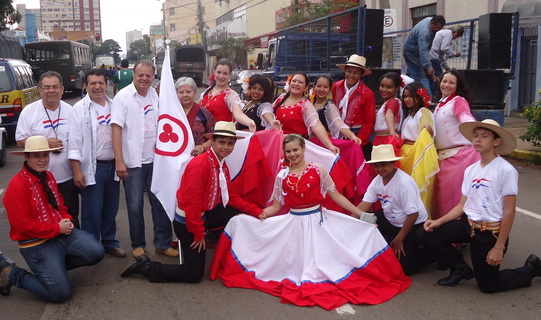
DELASNIEVE DASPET-- Curriculo - Portugues Advogada e ativista das causas da Paz, Sociais, Humanas, Ambientais e Culturais Delasnieve Miranda Daspet de Souza é sul-mato-grossense de Porto Murtinho, onde nasceu e cresceu em meio a exuberante natureza que é o Pantanal do Mato Grosso do Sul, Brasil, residindo em Campo Grande-MS. Casada, tem dois filhos. É poeta. Ativista da Biopoesia. Cronista, ensaísta, palestrante, professora, educadora, faz trabalho social com menores carentes, pertence e representa várias associações e academias literárias e culturais nacionais e internacionais. Com trabalhos literários premiados nacional e internacionalmente,publicados em vários países. É Peace Ambassador in Universal Ambassador Peace Circle - Genebra – Suíça, 2005; Representante para o Brasil da Universal Ambassador Peace Circle ;Ambassador for Peace – Universal Peace Federation on the International Federation for Word Peace – 2007, Seoul-Korea; Membro da World Academy Arts and Culture Foundation - WAAC/WCF ( Seoul-Korea-USA); Presidente para o Brasilda India Intellectual Peace Academy, Bareilli – India; , Membro da GHA- Global Peace Science, - St. Petersburg, Russia;Membro e Representante para o Brasil da World Philosophical Forum,Atenas – Grécia;Eleita Cidadã da Terra - Século XXI pelo World Philosophical Forum - Athens, Greece, UNESCO -. Peace Ambassador in Brazil - IFLAC PAVE PEACE- The International Forum For the Literatureand a Culture of Peace,Israel. Representanteem Mato Grosso do Sul do Proyecto Cultural SUR ; Governadora do Instituto Brasileiro de Culturas Internacionais. Presidenteda Associação Internacional de Poetas , membro do Forum Permanente de Direitos Humanos de Mato Grosso do Sul.Membro da Comissão Regional de Justiça e Paz – Mato Grosso do Sul (CRJP- MS), entidade subsidiária da Conferência Nacional dos Bispos do Brasil (CNBB) - Regional Oeste 1do Regional. Como ativista das causas sociais sempre trabalha e trabalhou pela integração das minorias – em todos os aspectos, culturais, sociais, direitos humanos, da paz e da solidariedade. Presidiu o Fórum Estadual de Cultura de MS até outubro de 2015, e, tambémo ConselhoEstadual de Cultura atéabril de2015. Éautora dosanteprojetos de leis que criaram o DIA ESTADUAL DA PAZ( Lei 4.034 de 31.05.2011), e ,DIA MUNICIPALDA CULTURA DA PAZ ( Lei 5.039 de 22.12.2011) -emMato Grosso do Sul e em Campo Grande-MS, em Diamantino – MT,e, Eem vários municipios brasileiros. Támbém, pe autora di anteprojeto de leique criou o Dia do Escritor Sul-Mato-Grossense (Lei 3.486 de 28 de dezembro de 2007) .Idealizadora e autora do projeto Meu Sonho de Paz– Maior Apelo Estudantil pela Paz – certificado pelo Rankbrasil como Recorde Brasileiro - com aparticipação de mais de 28 mil estudantes da redepublica municipal realizado em setembro de 2012. Autora do anteprojeto que criou o ESPAÇO DA PAZCampo Grande ( Lei 5.317 de 30 de abril de 2014 ); Realizou a 1ª e a 3ª Edição doPremio Destaque Cultural do FESC/MS2010 e 2014. Autora do anteprojeto de leipara a criação do Conselho de Paz e da Cultura da Paz no Municipio de Campo Grande e para o Estado de Mato Grosso do Sul, via Assembléia Legislativa. Palestrante nas escolas da rede pública sobre a Paz e a Cultura daPaz, através da literatura, e, em especial, da poesia.
Já editou 11 livros solos ( portugues, frances, alemão, austríaco, espanhol),participou de mais de 100 coletâneasnacionais e internacionais. - Mantem - junto com amigos das artes – a Caravana daCultura Delasnieve Daspet – que leva musica, dança, folclore, teatro, poesia, literatura, contação de história por todo o estado de Mato Grosso do Sul, de forma graciosa, sem quaisquer ônus, a população carente do estado. 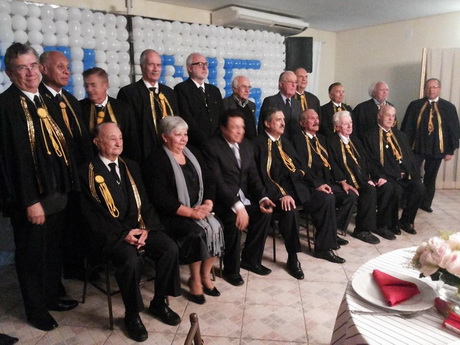
Mr. Leo Semashko, About the book Peace from Harmony through Science: “Global Peace Science”. I really liked what I read so far. I hope to serve as a parameter to those who toil for peace. We need to promote this work. I'll print ten (10) copies of the book for me. I will send one to President Dilma Roussefft and another to the Minister of Justice of Brazil - José Eduardo Cardoso, and the President of the Brazilian Academy of Letters, and Mrs. Yara Maura Silva, - CEO - International Vice President of the MSP International (NY). And also, in order to spread here in the country. Regards, Delasnieve Daspet - Brazil 05/02/16 Mr. Leo Semashko, Sobre o livro Peace from Harmony through Science Gostei muito do que li até agora. Espero que sirva de parâmetro aos que labutam pela paz. Precisamos divulgar este trabalho. Vou mandarimprimir 10 ( dez ) exemplares dolivropara mim. Vou enviar um aPresidenteDilma Roussefft e outro aoMinistro da Justiça do Brasil - Sr.José Eduardo Cardoso, e, ao Presidente daAcademia Brasileira de Letras, e, a Sra. Yara Maura da Silva - CEO - International Vice President da MSP International ( NY ) E, também, para poder divulgar aqui no Pais. Atenciosamente, Delasnieve Daspet – Brasil 05/02/16 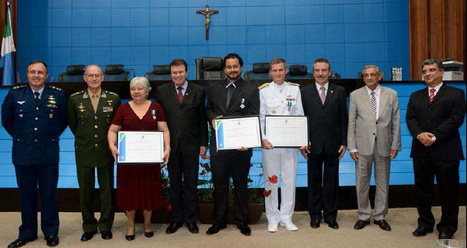
Mr. Leo Semashko, The books are already with me. I said received there. That you sent them to give greater importance and relevance for those who want to take - (President, Minister, Brazilian Academy of Letters). I sent the photos to you and the pages were beautiful. Open multiple pages - in English and in Portuguese on blogs and websites. I opened a page on Facebook. You invite me to be ambassador GHA Peace and Harmony Disarmament in Latin America, honored accept this mission. The violence here has been a factor of disintegration of families and society. You ask me - too - if accepted a page on your site - again - I am honored by the invitation and deference - is the maximum - the title of AGE: - "Delasnieve Daspet: Muse of Brazilian Harmony of Peace." I send the request. Can you send me the page you want to translate - try to match the trust - simply put and Portuguese. And GHA Vice-President - actually, this is quite a surprise - and, if they vote the agreement, of course it'll be by your side and the other. And not being accepted - also continue alongside the masters learning how to make and promote peace. Fraternal embrace friend. Delasnieve Daspet, Universal Ambassador of Peace 06/02/16 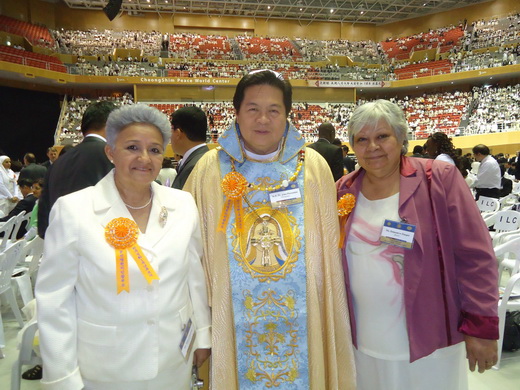
GLOBAL PEACE SCIENCE (Ciência da Paz Global) por Delasnieve Daspet
Recebi, hoje, 10 ( dez ) livros - diretamente da Russia, de São Petesburgo, do Dr. Leo Semashko, entre outros titulos - Ph.D em Filosofia e editor-chefe do livro "Ciência Global da Paz".
Este livro ( em russo e ingles ) que lhes apresento levou 11 ( onze ) anos para ser compilado, e, conta com a participação de 34 paises de todos os continentes.
59 co-autores provenientes dos EUA, 33 - da Rússia, 15 - da Índia, 6 - do Canadá, 5 - da Austrália, UMA, DO BRASIL ( eu), etc.
Entre os co-autores Peacescience são: o ex-presidente indiano - Abdul Kalam, o laureado Nobel da Paz da Irlanda do Norte - Mairead Maguire, líder pacificação intelectual dos EUA - Noam Chomsky, pioneiro dos estudos de paz da Noruega - Johan Galtung, Chanceler da Universidade Pedagógica IASE of India - Kanakmal Dugar, sociólogo da Universidade Católica da Bélgica - Francois Houtart, líder da organização de tomada de paz das mulheres na África - Ayo Ayoola-Amale do Gana, pesquisador da criatividade Roerich - Julia Budnikova da Rússia, diretor do Instituto de Finanças , acadêmico do Cazaquistão - Uraz Baimuratov, um dos líderes de ioga indiano - Ramesh Kumar e muitos outros cientistas e pacificadores (6).E, eu, entre eles - pelo Brasil.
Deixo, nesta magnifica obra, a minha participação - modesta, mas mostrando que quando instado - nenhum brasileiro deixa de fazer a sua parte. Em mais 615 paginas - temos tratados de filosóficos, sociólogos, culturais, religiosos, e, homens e mulheres que fazem da paz o seu metier.
Voces encontrarão poesias que exaltam a não violência, a amizade, o cultivo do respeito, a responsabilidade para com os povos do planeta.
Tenho orgulho de dizer que faço parte desta entidade que congrega em seu seio pessoas que discutem a paz e a cultura da paz - como ciência a ser - necessariamente - aplicada para que o mundo - como o conhecemos, possa ter continuidade.
Deverei entregar um livro para a Presidencia da República, outro ao Ministro da Justiça, e, também, um outro ao Presidente da Academia Brasileira de Letras. E, um outro ainda - entregarei ao Pedro R. C. da Silva - que traduziu meu poema. Ele é neto da querida Yara Maura da Silva, e, sobrinho neto do Mauricio de Souza, e, moram em Nova Iorque.
Abaixo a apresentação do livro pelo Dr. Leo Semashko. Se virem alguma coisa em discordância, confesso, meu inglês sempre foi ruim.
Delasnieve Daspet, Embaixadora Universal da Paz
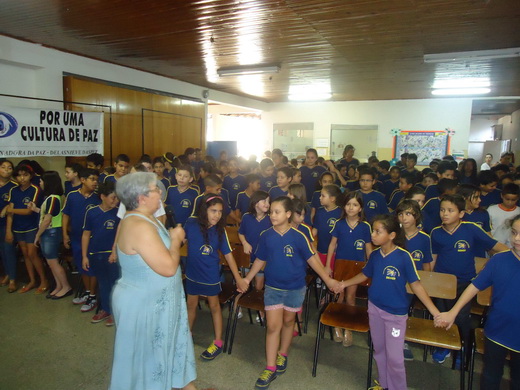
Global Peace Science (GPS)
Briefly about the Book, its Authors and Significance.
Currículo
Em russo: http://peacefromharmony.org/?cat=ru_c&key=662
Em Inglês: http://peacefromharmony.org/?cat=en_c&key=656
O destino positiva da humanidade e cada país no século 21 será
determinado pelo reconhecimento do GPS e sua democracia de SPHERONS.
GHA
Primeiro eles te ignoram, depois riem de você,
em seguida, eles lutar com você, então você vence.
Gandhi
O sem precedentes Ciência Paz Global (GPS ou Peacescience), publicado em livro, e, foi criado na Associação Global Harmony (GHA) por 11 anos desde a sua criação em 15 de fevereiro de 2005. Destes, 8 foram os anos de preparação, por que GHA publicou sete livros anteriores, discutiu e aprovou 47 projetos de paz global de harmonia (Capítulo 7.1). Trabalhar com GPS como o projeto de 48 começou diretamente no Março de 2013.
Em língua russa, este livro de 432 páginas, por 89 co-autores de 30 países, foi publicado em São Petersburgo, Rússia, em janeiro de 2015: http://peacefromharmony.org/docs/Nauka-globalnogo-mira-2015.pdf.
No idioma Inglês, este livro de 616 páginas (quase 200 páginas mais um russo) por 174 co-autores (em mais 85 do que a edição russa) de 34 países, foi publicado no início de fevereiro de 2016, a Índia, a Rússia e os EUA. Seu formato PDF foi publicado em janeiro aqui: http://peacefromharmony.org/docs/global-peace-science-2016.pdf.
Os co-autores do livro são pessoas de diferentes idades (9-90) e profissões (de trabalhador para acadêmico), representante de 15 religiões diversidade de culturas de 34 países em todos os continentes, incluindo 59 co-autores provenientes dos EUA, 33 - da Rússia, 15 - da Índia, 6 - do Canadá, 5 - da Austrália, etc. Só um grupo internacional integrando em uma unidade harmoniosa do planeta de diversidade cultural poderia criar Peacescience.
Entre os co-autores Peacescience são: o ex-presidente indiano - Abdul Kalam, o laureado Nobel da Paz da Irlanda do Norte - Mairead Maguire, líder pacificação intelectual dos EUA - Noam Chomsky, pioneiro dos estudos de paz da Noruega - Johan Galtung, Chanceler da Universidade Pedagógica IASE of India - Kanakmal Dugar, sociólogo da Universidade Católica da Bélgica - Francois Houtart, líder da organização de tomada de paz das mulheres na África - Ayo Ayoola-Amale do Gana, pesquisador da criatividade Roerich - Julia Budnikova da Rússia, diretor do Instituto de Finanças , acadêmico do Cazaquistão - Uraz Baimuratov, um dos líderes de ioga indiano - Ramesh Kumar e muitos outros cientistas e pacificadores em circulação (6). Iniciador, editor-chefe e gerente do projeto é Leo Semashko, GHA Fundador e Presidente, Rússia.
A contribuição desses autores no GPS por três anos composta de 309 artigos, incluindo Leo Semashko 101 artigos (81 individuais e 20 co-autoria), Subhash Chandra 17 artigos (10 individuais e 7 co-autoria), Charles Mercieca 6 artigos (5 individuais e uma co-autoria) , Johan Galtung 5 artigos, etc.
Os artigos do livro 309 estão unidos em seus 13 capítulos, 3 Secções, 2 partes, anexo e finais Filosófica, que têm sido uma discussão coletiva e aprovação dos membros GHA. As partes mais importantes desta discussão três anos em uma ampla variedade de avaliações e comentários de Peacescience foram postadas aqui: http://peacefromharmony.org/?cat=en_c&key=598. Diversidade de opiniões é complementada uma variedade de mais de 600 fontes na bibliografia do livro em 17 páginas (580-597).
O livro GPS é publicado nas GHA 72 membros doações recolhidas em 2014 e montante de $ 8,677. Este é primeiro orçamento da paz global na história em 2015. A sua comparação com o orçamento militar mundial este ano, quase US $ 2 trilhões (de acordo com dados não oficiais, é várias vezes maior), mostra a prioridade militarista, auto-destrutivo do global dirigentes de elite e seus governos nacionais. Infelizmente, a humanidade há muito tempo tem conciliado com esta prioridade e não está olhando para mudar-se que só é possível com base GPS.
Nós não vamos falar sobre as deficiências que Peacescience estão cheios como a primeira tentativa da ciência similar. Vamos enfatizar as suas principais vantagens e importância.
1. Singularidade. Peacescience é incomparável a qualquer outra coisa hoje. A humanidade hoje não tem qualquer conhecimento similar ou comparável de paz global, alternativa à ciência militar que surgiu ao longo de dois séculos atrás, em 1799. O GPS é capaz de superar essa defasagem de paz da guerra e criar uma alternativa fundamental para a ciência militar e militarismo na geral. Singularidade de GPS é determinada pela descoberta de SPHERONS - estrutura social harmoniosa profunda da sociedade em todas as suas formas históricas. Este desconhecido até estrutura profunda criação GPS é pacífica sobre a sua natureza objetiva e a chave para a compreensão científica de paz global.
2. SPHERONS '. GPS é baseado na descoberta social sem precedentes das classes universais e harmoniosas da população no seu conjunto - SPHERONS empregadas em quatro esferas da produção social, o que só é possível em paz. ThereforeSPHERONS são atores fundamentais não só a produção, mas também a paz global em todos os níveis sociais, a partir da família. SPHERONS constituem uma estrutura social profunda e eterna da sociedade como um todo e todas as suas partes, sem exceção, em todas as suas formas históricas (capítulos 1 e 2). A descoberta de SPHERONS tem um cognitiva revolucionária, significado social e político (democrático) para a sociedade.
É complementada pela descoberta de Harmony Socioeconômico Paradigma: "D + 3D", que expressa o espiritual base / ético ( "D" - da Rússia "Duh" - espírito) de um desenvolvimento harmonioso e adequado para que o desenvolvimento de outros três "D" esferas: a demografia (sociosfera), a democracia (Orgsphere) e de demonstração economia (Technoecosphere). A essência de uma Harmony Lei Básica neste paradigma é a elevação prioridade das necessidades espirituais dos indivíduos e da sociedade, que se opõe à Lei desarmônica de dominação destrutiva das necessidades materiais. (É de Academician Baymuratov Paradigm, 2014, Cazaquistão. Veja o Capítulo 8.15).
3. Integral, caráter holístico e dinamismo. Peacescience, graças SPHERONS universalidade, permite sintetizar e preservar em si mesmo as realizações de pacificação do passado e evolução futura (Capítulos 3, 4, etc.). Ele fornece uma abordagem holística para resolver os problemas da paz mundial a todos os níveis. O GPS não pretendo finalidade mas avalia-se como "a versão inicial", o que não exclui outras opções e está pronto para entrar com eles no Concurso científica internacional (Capítulo 8, etc.). Isso supõe a possibilidade de uma outra interpretação para a estrutura social profunda.
4. Valor da Peacescience. Em qualquer caso, independentemente da medida de verdade Peacescience de suas várias teorias, é uma conquista epistemológica indubitável e valor social como o primeiro na história precedente de conhecimento científico da paz global em seu conjunto (a história não conhece outros exemplos semelhantes). Portanto, seguindo o ditado italiano sábio "Se isso não é verdade, é bem concebido," (se non è vero, è ben trovato) sobre Peacescience pode dizer que, mesmo que ele não é certo em todas as partes, é bem concebido e certamente útil para a humanidade. Peacescience abre para ele o caminho da pesquisa e atualizar um absolutamente necessária para que a ciência eo conhecimento fundamentalmente novo, avanço, enriquecendo-o e salvando-a de guerras, a partir do qual ele ainda é (para os 6 mil anos de história) não tem a vacina radical e a imunidade espiritual. É o caminho da geopolítica conscientes de paz 'SPHERONS sob o Direito Internacional da constituição da Terra.
A conclusão do livro Peacescience no GHA é apenas o inicio do desenvolvimento, difusão e aplicação do GPS novo paradigma de pensamento em instituições culturais acadêmicas, educacionais, políticos, religiosos e outros.
Currículo. Peacescience de harmonia define a forma harmoniosa e justa do desenvolvimento da humanidade em todas as suas quatro esferas. A terceira maneira integra organicamente as vantagens e suavemente (não-violência) supera os extremos patológicos dos dois igualmente desarmoniosa e violento, tradicional para os caminhos do século 20: o socialismo e o capitalismo e suas ideologias básicas: o marxismo e o liberalismo. O passado e o início do novo século mostrou que, sem cientificamente consciente e percebeu a harmonia social vivem mais em um pesadelo de qualquer forma militarista da sociedade tradicional, atolados em guerras intermináveis, terrorismo, assassinatos, crimes, corrupção, mentiras, pseudo elitista-totalitária bilionários democracyof atrás da tela de bonecos eleitos, drogas, desigualdade gritante, e outras patologias na beira do suicídio nuclear do mundo é impossível. GPS oferece uma maneira de sair de seu impasse por meio da ciência, educação, cultura e democracia de SPHERONSas o centro político da Constituição Terra federalista (capítulo 8.19). É aí que reside o significado histórico GPS.
Topo. O destino da humanidade e os seus países-chave do século 21 com diferentes orientações culturais, económicos e políticos: Rússia, China, Índia, UE e os EUA, será determinado pelo reconhecimento de GPS e sua democracia de SPHERONS (democracia simétrico) assegurando o domínio de elevação espiritual, a prioridade social das crianças, geopolítica da paz global, o desarmamento geral e completo e de prosperidade económica para todas as nações de sua harmonia como uma família em um planeta.
Dr. Leo Semashko, presidente GHA, GPS Editor Chefe
Leo Semashko, Ph.D. (Filosofia), presidente fundador, Harmonia global Association (GHA) desde 2005; Conselheiro Estadual de São Petersburgo; Filósofo, sociólogo e Peacemaker da Harmonia; Autor de mais de 400 publicações científicas, incluindo 18 livros em 1-12 línguas; Autor de Tetrism como a unidade de Tetraphilosophy e Tetrasociology - ciência da harmonia social, a paz mundial ea civilização harmoniosa; Diretor: Tetrasociology Instituto Público, Rússia; Director, GHA site "Paz de Harmony": http://peacefromharmony.org/; Iniciador e editor-chefe do livro "Ciência Global da Paz".
Endereço: St. Petersburg, Rússia, telefone: 7 (812) 597-65-71,
E-mail: leo.semashko[ @] gmail.com 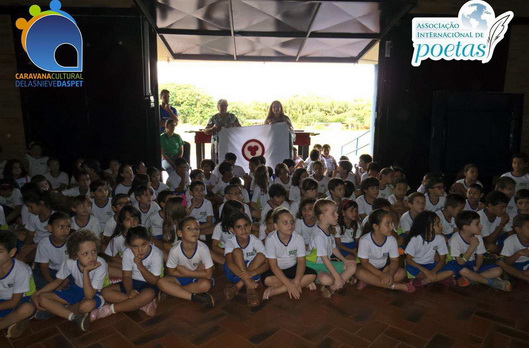
Dr. Leo e demais membros,
desejo a todos, felizes festas. Que tenhamos um ano profícuo em nossos trabalhos em prol da paz. Tomei a liberdadede publicara relação de membros enviados por anexo. http://associacaointernacionaldepoetas.blogspot.com.br/2015/12/world-intellectuals-endorse-importance.html Building a Nation of Peace - Construir uma Nação de Paz Delasnieve Daspet* http://www.usinadeletras.com.br/exibelotexto.php?cod=68555&cat=Artigos&vinda=S . Todos nós, os sonhares e ativistas, o povo, todos, indistintamente, temos grande responsabilidade de construirmos e de nos posicionarmos em favor da paz.Temos de trilhar caminhos diferentes que nos levem a paz e a justiça social, que tenha respeito pelos direitos humanos e pelas necessidades do homem. Que possamos levar a todos mensagens de amor e de esperança. Conscientizar o humano de que ele não foi feito para a guerra. O complicador é que a paz não se vende, não se compra, não se determina. Sem esforço ela não existirá. E, tem primeiramente, nascer no coração de cada ser humano. Se não houver paz em cada um como haverá paz do povo e de uma nação? A paz é nossa obrigação. Obrigação de cada um de nós. Ela tem de existir em nosso lar. Temos de ensiná-la aos nossos filhos. Eles tem de aprender o respeito a si próprio e aos seus semelhantes; a conviver com os diferentes, que tem direitos e deveres, e, resolver seus problemas.A paz é tão frágil que devemos trabalhar todos os momentos em sua construção. A paz se vive. A paz é justiça. É o não existir fome. É não ter sede. É ter educação, saúde e segurança. É solidariedade. Paz é ver reconhecida a dignidade de cada ser como pessoa. É saber a diferença entre o bem e o mal. Respeitar a vida, o meio ambiente. É o não existir da violência. Respeitar as virtudes. A paz se encontra na caridade, não como esmola, mas como amor. Os frutos da Paz são a justiça e o bem comum que serão conseguidos com o calar das divergências religiosas. Na força e no querer de todos os herdeiros dos profetas, o que deveria ser chamado de um Acordo Geral de Paz, em nome de Deus Criador, procurando-se a reconciliação de todos os envolvidos. Restaurando e regenerando a unidade entre os povos e da vontade de construir, de crescer, de caminhar para a busca da esperança, assumindo o desejo de construirmos uma sociedade na qual possamos caminhar na busca do inalienável direito a dignidade inerente ao ser humano. Devemos agir em conjunto pelo nascimento de um novo mundo. Um mundo onde a justiça, trabalho, alimento, saúde e prosperidade seja direito de todos. . *Delasnieve Daspet. Ambassadeur Universelde la Paix Cercle Universel des Ambassadeurs de la Paix - Suisse/France RepresentantCercle Universel des Ambassadeur de la Paix - Brésil (Section ) Iflac Pave Peace - Israel - Representante no Brasil World Philosophical Forum – Athens/Greece - UNESCO UniverselPeace Federations - Seoul/Korea - onU International Intellectual Peace Academy - Bareli/ India 100 Thousand Poets for Change - USA Caravana Cultural Delasnieve Daspet Associação Internacional de Poetas Cidadã da Terra - Século XXI - http://wpf-unesco.org/eng/board/bran/bra/index.htm - UNESCO MembrodaGlobal Harmony Association (GHA)- St. Petersburg, Russia - Membro WCP/WAAC and Poets - World Academy Arts and CultureE.P Justice - Seoul /USA - UNESCO 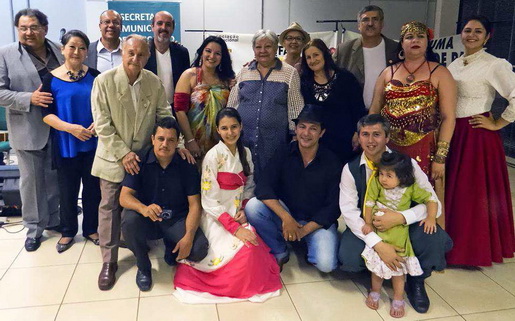
GOOD MORNING EVERYONE! Everyone can talk to the president in any language. The advice other translated. As replayed in the email. And in pagin site. Matters to them this kind of dialogue. I do directly by email of particular agenda it. Delasnieve Daspet 11/11/15
International participation in Share http://www.secretariageral.gov.br/atuacao/internacional The International Office of the Presidency of the Government of the Republic Secretariat has the task of monitoring, support and propose the agenda to the Minister on their activities related to international theme. Its role includes maintaining a permanent dialogue with civil society on issues of the global agenda. The actions developed by the Advisory aim to broaden social participation in the discussion and formulation of public policies.
Among the main themes of the advice we highlight the social integration in Foros Regional Integration and political-diplomatic dialogue such as Mercosur, Union of South American Nations (UNASUR), Community of Portuguese Speaking Countries (CPLP), Commonwealth of Latin American and Caribbean States (CELAC), Forum India-Brazil-South Africa (IBSA), BRICS, UN and Inter-American System; facilitating international cooperation between civil society actors and the strengthening of citizen participation in the debate on foreign policy in Brazil.
With regard to the future perspective of action of the International Office, the intention is to articulate, in regional areas, the agenda of the Social Summit of Mercosur; replicate the experience of Mercosur to other fora of integration and political and diplomatic coordination (UNASUR, CELAC, CPLP, IBSA, BRIC and G-20); and strengthen dynamics of social participation in UN fora (UNGA, ECOSOC, HRC, FAO) and consultation processes with civil society (eg Post-2015 / ODM / ODS and the FAO Guidelines for Responsible Investment). Noteworthy is also the stimulus to the Minister of intergovernmental engagement in international forums and civil society.
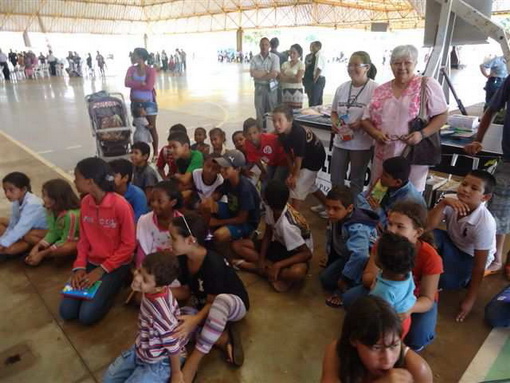
Talk to the President (form of participation of any public - national or international) http://www2.planalto.gov.br/fale-com-a-presidenta
by Presidential Portal - published 04/07/2011 18h26, last modified 10/27/2013 10h57 Direct communication channel "Talk to the President" The "Talk to the President" is a direct communication channel between the people and the President of República. Criado in 2004 uses an electronic form that ensures privacy, security and the sender of the message.
In transmitting the electronic form, the applicant gets in your mailbox asking for confirmation of shipment. only after confirmed, the message will arrive at the Presidential Office system.
Because it is the President of the Republic, these contacts transcend common communication practices of Internet users and is becoming the so-called 'post liturgy'. That's one of the reasons that made us choose to use the form instead of email. All messages after read by group of advisors, are processed, answered and archived. 11/11/15 
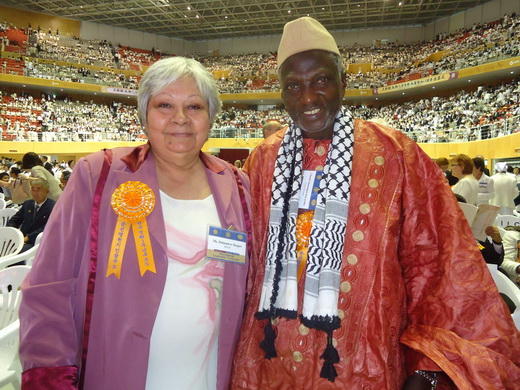
------------------------------------------------------------------------------------------
THE SCIENCE OF NON-VIOLENCE AND VIOLENCE IN BRAZIL By Delasnieve Daspet* and André Maltez** The "non-violence" became known from the peaceful resistance of Mahatma Gandhi in the struggle for Indian independence, the era, one of the most important British colony. This movement began in the nineteenth century. But many internal problems made the process difficult. Perhaps the most serious problem faced was that of religious division between adherents of Hinduism and its rigid castes and Muslims, intolerant of Hindu polytheistic practice. In this context, Mohandas Karamchand Gandhi, an Indian who studied law in England, and with the knowledge and influence of several thinkers, including Thoreau, and his refusal to violent means as a form of struggle. He used it and other forms of combat. It encouraged non-cooperation with the colonizers, through strikes, non-payment of taxes, and boycotting English products. Thus, his revolution did not respond violently to the unjust laws of the state, but did not comply with them. It was through civil disobedience of laws considered unfair that Gandhi became known around the world in defending non-violence in social struggles. He was also adept at fasting as a form of protest and his figure influenced the Muslim and Hindu communities of India. Gandhi, for his ideas, was murdered by a Hindu. This strategy, too, was adopted by Martin Luther King (1929-1968), who refused to abide by the American segregationist laws. The objective was not a break with the legal and institutional order, but a fight against unjust and harmful laws to that part of society. Although they did not use violence as a form of struggle these movements were strongly repressed by the authorities, Their leaders persecuted, repressed, imprisoned. These methods continue to serve as a practice for various organizations, some in defense of ecology. And for them to be effective, the support of public opinion, which must be convinced that it is a fair fight, is important. Below, Ghandi's ideas remain extremely powerful: "Violence is created by inequality, non-violence by equality." "The prison is not the bars, and freedom is not the street; there are men trapped in the street and free in prison. It is a matter of conscience. " There is no way to peace. The peace is the way. "There is enough wealth in the world for the needs of man, but not for his ambition." "Just as a drop of poison engulfs a whole bucket, even a lie, however small, spoils our whole life." "You must not lose faith in humanity. Humanity is an ocean. If a few drops of the ocean are dirty, the ocean does not become dirty. We have to become the change we want to see. " Gandhi defined his fight like this: "Nonviolence does not consist in renouncing any real struggle against evil. Non-violence, as I conceive it, undertakes a more active campaign against evil than the Law of Talion, whose very nature results in the development of I lift up the sword of the tyrant by not crossing it with a steel of better quality, but by defrauding his hope by offering no physical resistance, he will find in me the resistance of the soul that had fled from its attack.This resistance will first blind it and then force it to bend.and the fact of folding will not humiliate the aggressor but dignify it ... There is no weapon more powerful than the well channeled! " THE VIOLENCE IN BRAZIL Violence in our day has reached frightening levels. People are barred from enjoying the right to come and go freely. Society does not know how to behave. This is an issue that needs to be tackled seriously. Violence took over even small urban centers. There is no place immune to the process of violence of man. We have to face that violence does not just add to the problem of the state, or the lack of public policies of the rulers, as some say. Society is also to blame. The subject has to be discussed with all social segments. We need a correct diagnosis. It is not poverty that produces violence. Poverty is one of the causes. There are several components that need to be analyzed. Perhaps the first problem that needs to be discussed and solved is the family situation. Family problems need to be solved. The family has been fragmented and needs to be recovered. Revitalized. Another segment to be revitalized is the school. She is or should be the family's great partner. To develop solidarity, fraternity, coexistence and acceptance of differences. They, family and school, respond for the formation of the individual. If they are without credibility social degeneration happens. To which we are living. Violence results from the disintegration of society. Human respect no longer exists. It tries to combat violence with violence. We must fight violence with a CULTURE OF PEACE. And how can one cultivate peace? Eliminating from us any kind of violence. Wishing the best for you and others. Causes of Violence Main causes of violence: • The multiple needs of low-income populations • The illegal option • The inefficiency of police action • Incipient information technology Possible measures against violence 1) Realization of social projects in order to reduce social inequality 2) Creation of a public security research and studies institute 3) Criminal intelligence 4) National registrations 5) Information technology Education: the best way to combat violence in the country. Brazil needs public policies in the area of public security. How should we combat this problem? With EDUCATION. This is the best way to combat violence in the country. Today, it is in a very privileged position to be one of the most violent and insecure countries in the world. The increase in the rate of crime is increasingly alarming, making Brazilians, who are not criminals, trapped in their own homes. It should be noted that among the many promises made by politicians in the country, the most cited were to build more prisons, strengthen security in public places, train public safety professionals and increase the number of police vehicles on public roads. It is a fact that Brazil needs and cries out for public policies in the area of public safety, since, after all, who is not afraid to go on a night's walk in the neighborhood, or to stay in a house that has no electric fences, alarm and 24-hour monitoring? But the question is: Does Brazil really need more prisons? Would not it be the case to begin to better educate our children who are the future of the country? Children should be educated to the world. The activities have to go beyond the subjects that are taught in the classroom. They need to learn to have responsibilities, and the school routine includes taking care of household and school chores. Prisons should be established on the basis of rules. The schedules are pre-established, the prisoners have time to wake up, eat, sleep, study and work. The main activity in the prisons should be, precisely this, the studies. Thus, the prisoner would feel prepared to return to society and lead a normal life. Citizens should be educated for life in society, learn to live peacefully and have opportunities to grow professionally. As the problem of public security in Brazil is something that is already at an advanced stage, it is up to the Brazilian authorities to restructure the Brazilian prison system and to invest more in our schools. More than public safety, Brazilian public education calls for more investments and special and differentiated attention. Brazilian children need to be educated for life and to live in society. In Brazil, education seems to be something "outside the reality in which one lives". Teachers need to be extremely valued people because they are the instruments that will shape the future of the nation. Without a doubt, education (if well-structured and qualified) is the best weapon against rising crime rates. Map of violence According to the 2016 edition of the Map of Violence, young people aged between 15 and 29 accounted for almost 60% of the victims of firearms homicides in Brazil from 2003 to 2014, although this age group represented no more than 27% of the total population. Also according to the Map of Violence, the incidence of homicides between blacks and browns is almost triple that of the white population. Black youths are also the main targets of police activity and imprisonment in Brazil. A study by the federal government and the United Nations Development Program (UNDP), based on data from 2012, found that 55 per cent of prisoners in the country were under 29 years of age and imprisoned 1.5 times as black than whites. In the city map, the spaces where the vast majority of our black and poor young people live face chronic disability if not absence of public services and equipment. Despite this, investments in leisure, culture, sanitation and urbanization continue to be carried predominantly to the wealthier areas of cities. CULTURE OF PEACE Developing a culture of peace is essential. We must reject perpetuating exclusionary practices that often translate into criminalization of our most needy young people. To reject prejudiced ideas like the one that has the suspects and guilty of always been arrested. It is necessary to understand and confront violence, to recognize and value differences and diversity in the school environment, and to encourage the political participation of the community where schools are inserted, through educational projects and strategies. Among the recommended tools are assemblies and the application of restorative practices. The professionals of the state network are being trained so that the schools construct plans of democratic coexistence adapted to the local and regional realities and in harmony with their pedagogical political plans. We need to promote a culture of peace in our society. Statistics Brazil has seven deaths per hour and beats record of violence. The country counted more than 63 thousand murders in 2017; rate of violent deaths per 100,000 inhabitants is 30.8 - 30 times higher than that of Europe. Brazil recorded 63,880 violent deaths throughout 2017. The number, which means an average of 175 deaths per day (or even 7.2 per hour), represents the new record of violence in the country, according to the new security yearbook released on Thursday (9) by the Brazilian Forum of Public Security (FBSP). According to the study, the total number of murders reported by state security secretariats throughout the country in 2017 is 2.9% higher than in the previous year, and this is the highest number since the data on violence began to be compiled by FBSP , in 2013. The overwhelming majority of these deaths resulted from intentional homicides, a crime responsible for 55,900 violent deaths in 2017 (2.1% growth over the previous year). There were also 2,460 cases of robbery and 955 deaths occurring after episodes of bodily injury. The rate of violent deaths in Brazil today is 30.8 per 100,000 inhabitants. This index reaches 68 (per 100,000) in Rio Grande do Norte, the state where there is the greatest risk of becoming a victim of murder throughout the country. For comparison, the European Commission announced earlier this week that the rate of violent deaths in the countries that make up the European bloc is 1.3 per group of 100 thousand inhabitants the Brazilian Forum on Public Security identified highs in the number of rapes and homicides. More than 60,000 women were raped last year, up 8.4% compared to 2016. The homicides totaled 4,539 cases, a 6.1% increase in the same comparison. The Maria da Penha Law, which completed this week 12 years, was triggered more than 221 thousand times by Brazilians over the past year. This figure means 606 cases of domestic violence per day. Police Lethality According to the yearbook, every day at least 9 people were killed by police officers in Brazil in 2015, resulting in a total of 3,345 people, or a death rate of 1.6 for each group of 100,000 people. The number is 6.3% higher than in the previous year. With 1 death every 9 minutes, Brazil has more deaths than Syria ... What is the homicide rate in Brazil? According to the study, prepared by Ipea and the Brazilian Forum of Public Security, in the last ten years, 553 thousand people have lost their lives victims of violence in Brazil. In 2016, 71.1% of homicides were committed with firearms. "Brazil is among the nations with the highest homicide rates in the world. June 5, 2018 How many homicides per year in Brazil? This is what the Atlas of Violence 2018, published by the Institute of Applied Economic Research (Ipea) in partnership with the Brazilian Forum of Public Security, reveals. According to the document, 553,000 people have been murdered in the country in the last 11 years. The Department of Conflict and Peace Research at the University of Uppsala in Sweden estimates that in 2016, 44,300 people died in the Syrian conflict. The information is reproduced by the World Bank. The Syrian Observatory for Human Rights speaks of 49,700 deaths in Syria in 2016. How many people were killed in Brazil in 2016? Brazil recorded 61,619 violent deaths in 2016, the highest number of homicides in history, according to data released by the Brazilian Forum of Public Security this morning (30). Seven people were murdered per hour last year, up 3.8% from 2015. How many people die per day in Brazil 2017? Violence leaves Brazil in 'true civilization crisis'. In the first five months of 2017, 3,349 people died in all terrorist attacks around the world. Brazil reaches this death toll in murders in just three weeks. How many people are killed per day in Brazil? More than 61,000 people were killed in a violent and intentional manner. This is just one of the statistics that show the scenario of insecurity in the country. on average, every 24 hours, seven people lose their lives in robberies, which is theft followed by death. one hundred and thirty-six people are raped and 169 murdered. Police violence and investments The new Brazilian Yearbook of Public Security also gathers data on deaths involving police officers. Over the past year, 367 police officers (civilian or military) have been killed, representing an average of one agent per day. In comparison with 2016, there was a fall of 4.9% in this index. Meanwhile, the total number of civilians killed in police interventions reached 5,144 in 2017 (an average of 14 deaths per day), an increase of 20% over the previous year. The increase in violence in Brazil is in spite of the increase in investments in public security, which reached R $ 84.7 billion in 2017 (average expenditure of R $ 408.13 per citizen in this area). The Union pledged 6.9% more resources than in 2016, while municipalities reduced their security investments by 2%. The states, meanwhile, were at the same level of resources invested between 2016 and 2017, increasing by only 0.2% in security spending. ATLAS OF VIOLENCE In Brazil, violence constitutes one of the major public policy issues. In order to assist researchers, journalists and general interest in crime and violence, the Institute of Applied Economic Research in partnership with the Brazilian Forum of Public Security developed the "Atlas of Violence" portal. The central philosophy that guided the construction of the "Atlas of Violence" is practicality, where the Internet user can easily access data from the Ministry of Health and Brazilian police, which are available for download or can be viewed in various formats , such as maps and graphs. The main page of the portal highlights 10 subtopics, where the user will find not only statistics but numerous works produced by Ipea (and videos) over the 20 years in which this agenda has been studied in the house. Brian Winter, in an article in Americas Quarterly magazine, suggests that things are easier than they really are. In his article, he suggests that there are no secrets to reducing homicides in Latin America, we would need to use a combination of preventive police, smart use of data, and possibly drug law reforms. But reality is unfortunately more complex. IT WILL BE IMPOSSIBLE TO SOLVE THE PROBLEM OF VIOLENCE WITHOUT UNDERSTANDING THE CONLUIO THAT EXISTS BETWEEN ORGANIZED, POLICE, AND JUDICIALARY CRIME IN VARIOUS BRAZILIAN STATES. Thus, it is not enough to know how to reduce violence. We have to think of democratic ways to make politicians have incentives to take effective action and that police want to join innovations, often in partnership with civil society. Conclusion Violence in Brazil has reached unacceptable levels and the great difficulty in putting an end to this evil is the multiplicity and greatness of its causes. What exists is a vicious cycle: the country's economic condition -> Social inequality -> Crimes -> Violence -> Inefficient police (economic condition of the country). Treating problems like this requires total participation of the society and singular commitment of the administrative organs. From theory to practice, there is a great distance to be traveled. If society were mobilized in search of peace as it mobilized for war, it would be easy to extinguish human violence. Bibliography: History: single volume / Ronaldo Vainfas ... [et al.]. - São Paulo: Saraiva, 2010
Modern Times, Sociology Times: High School: Single Volume / Helena Bomeny ... [et al.]. - 4.ed. - São Paulo: Publisher of Brazil, 2016; Rio de Janeiro: Getúlio Vargas Foundation, 2016. (Brazil Series: high school)
Americas Quarterly Magazine
Atlas of Violence
Brazilian Forum on Public Security (FBSP).
United Nations Development Program (UNDP)
V.M.Samuel Aun Weor - Explaining Ghandi
The Violence - Silvano Alves
Education the best way to fight violence - Fernanda de Castro Nakamura
Education, Culture of Peace - Macaé Evaristo DELASNIEVE DASPET* Lawyer, Poet, Writer, Speaker, Ambassador of Peace, Peacemaker, Activist Peace and Culture of Peace, Human Rights, Environment, Social, Global Citizen - ID number 078 - (Brazil).
International Association of Poets - President; GHA - Global Harmoni Association, Global Peace Foundation - Vice President and GHA Ambassador of Peace and Disarmament from Harmony in Latin America - Russia; Ambassadeurs de la Paix and Representative in Brazil of the Cercle Universel des Ambassadeurs de la Paix - France / Suisse; Ambassadeur de la Paix and Director in Brazil IFLAC - The International Forum for the Literature and Culture of Peace; World Philosophical Forum - Citizen of the Earth - 21st Century n78 http://glob-use.org/id.htm - UNESCO - Athens / Greece;Ambassaderus de la Paix in Universel Peace Federations - Seoul / Korea -; WCP / WAAC Member and Poets - World Academy Arts and Culture E.P Justice - Seoul / USA - UNESCO; WWPO Ambassador of Peace in Brazil - WorldWide Peace Organization; Member of International Writers and Artists Association - USA
Ambassadrice des Jeux Mondiaux de la Paix - by the International Committee des Jeux Mondiaux de la Paix, Le Gauthière, France; Chairman of the Culture Committee of OABMS; Indicated by the State Council of OABMS to hold the OABMS PELA!Author, coordinator and director of the 40 PONTOS DE PAZ project involving five Brazilian states (MS, RN, BA, PI, BRASILIA, SC), ARGENTINA AND BOLIVIA; Elected one of the 40 personalities of Mato Grosso do Sul, Brazil, on the 40th anniversary of the state's creation; Consultant Member of the Human Rights Commission of the Federal Council of the Brazilian Bar Association – OAB Adm. André Monteiro Maltez** Business Administrator graduated from the Catholic University of Salvador (UCSAL), post-graduate (MBA) from Fundação Getúlia Vargas - RJ in Business Management, registered in the Regional Council of Administration since 2005, acting in several administrative areas, strategic planning and business advisory. Currently holds the position of Superintendent of the Regional Council of Real Estate Brokers of the 14th Region / MS (CRECI-MS), Active and Regular Mason of the Patriarch Store of Campo Grande n ° 2963 of the Grand Orient of Brazil (GOB) Mato Grosso do Sul), holds the position of store president and has held the position of Secretary of Planning of GOB-MS. 14-01-19
Up
|